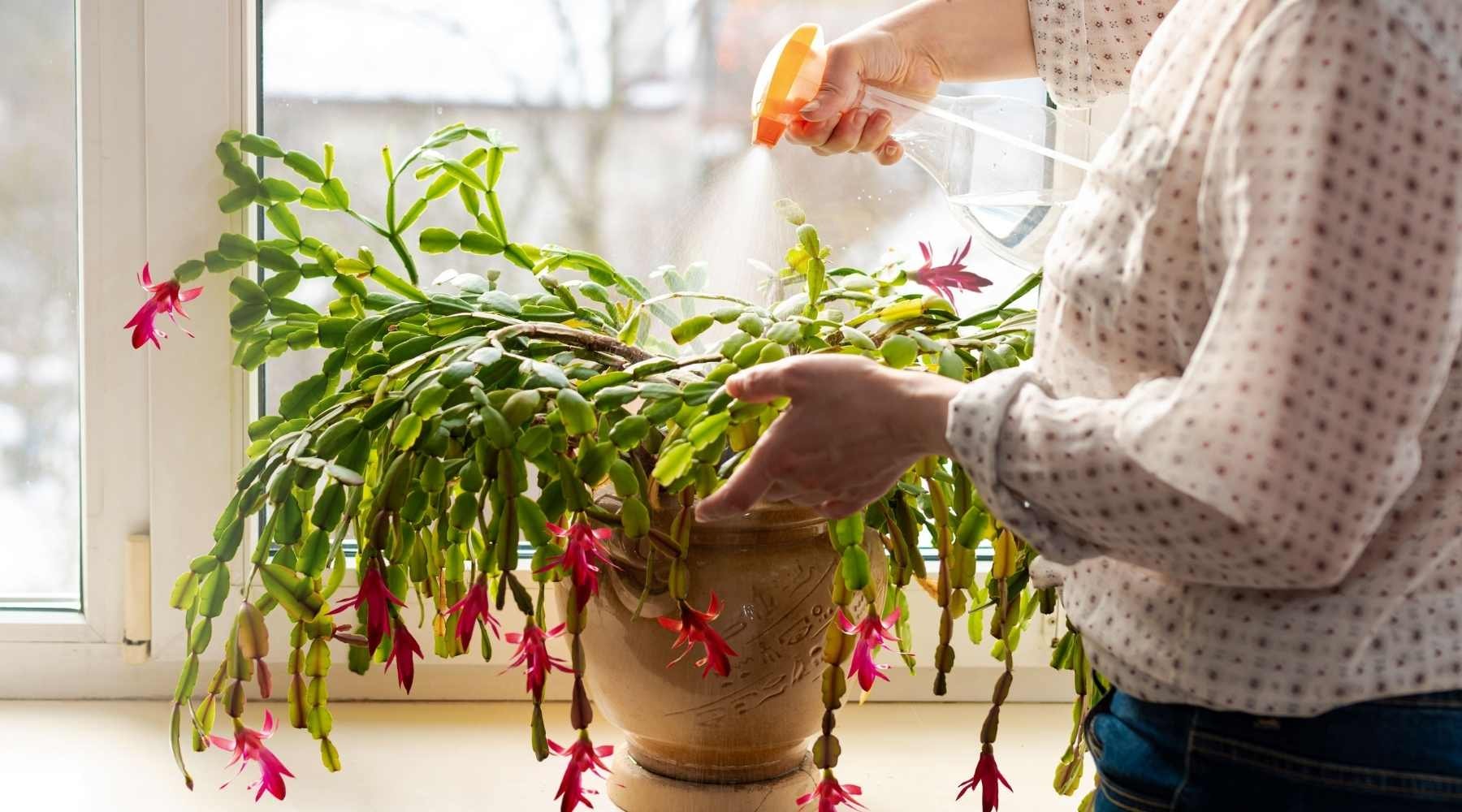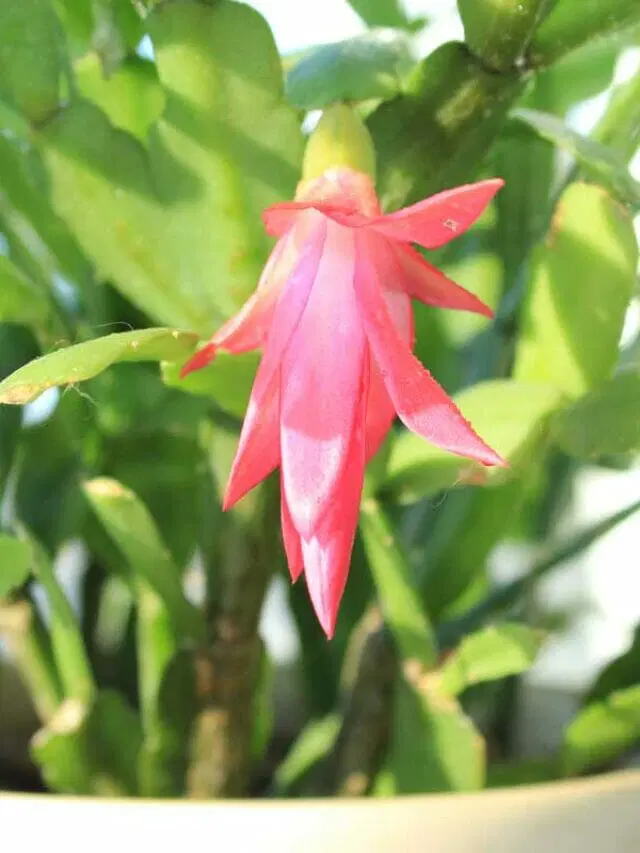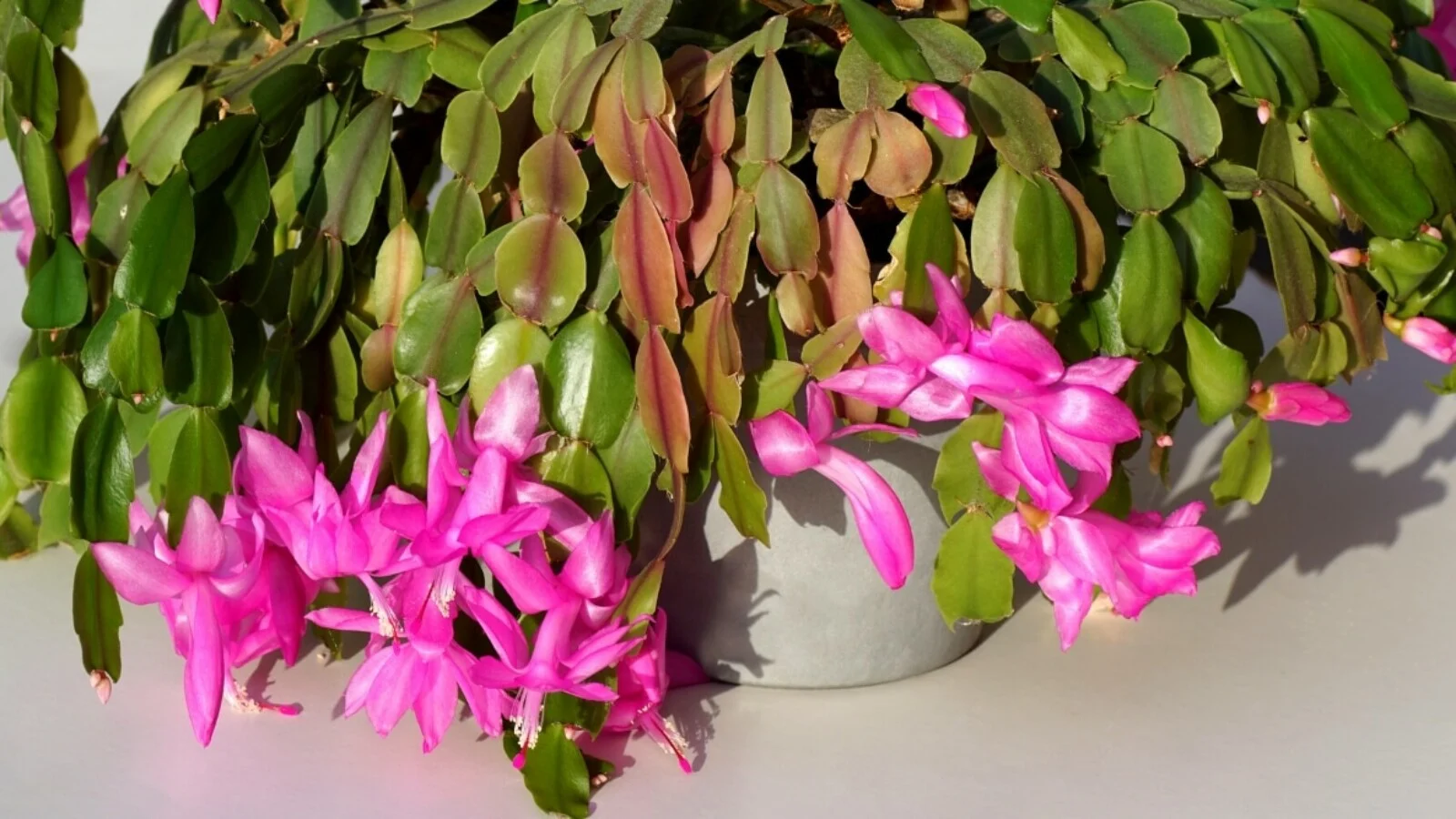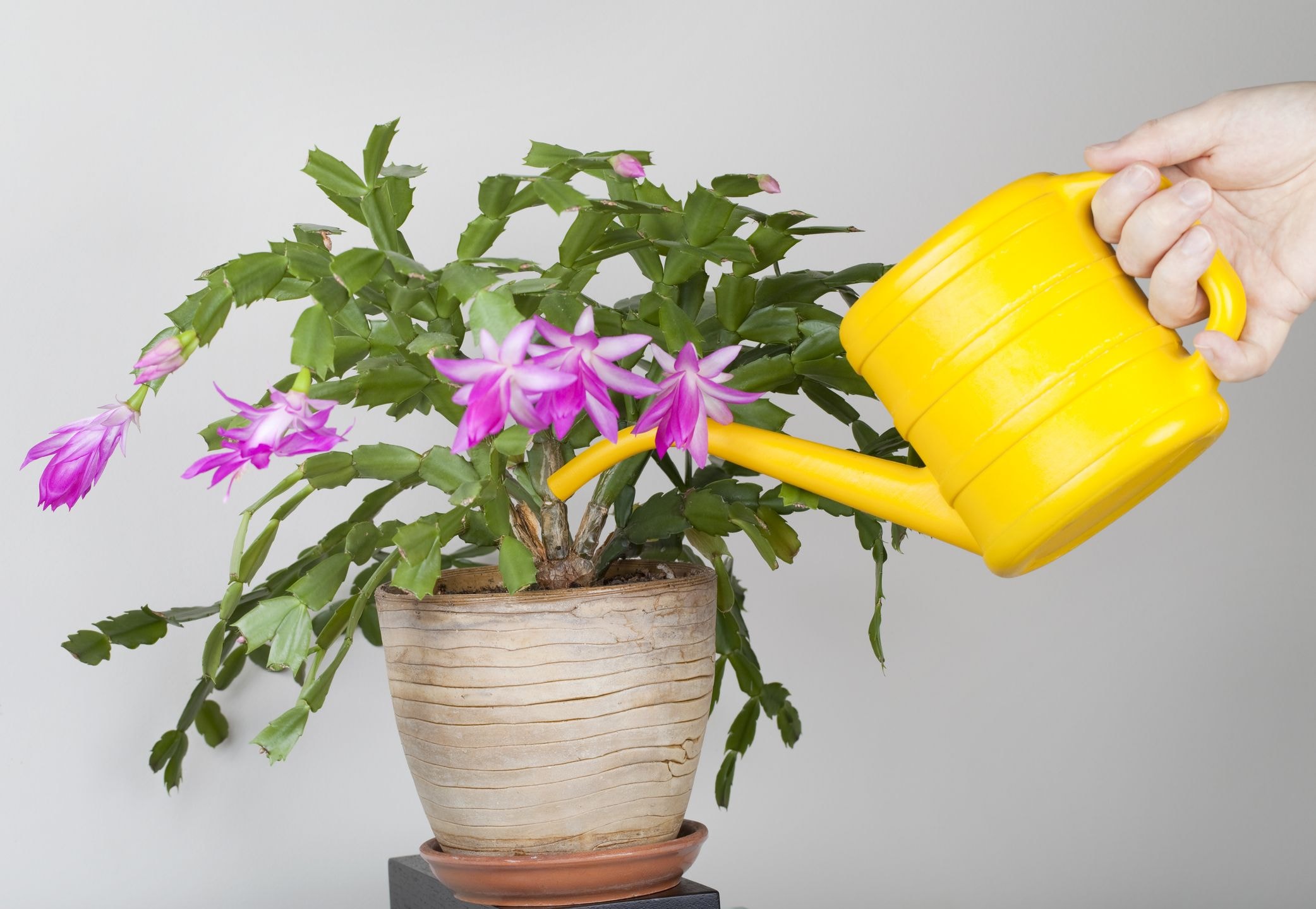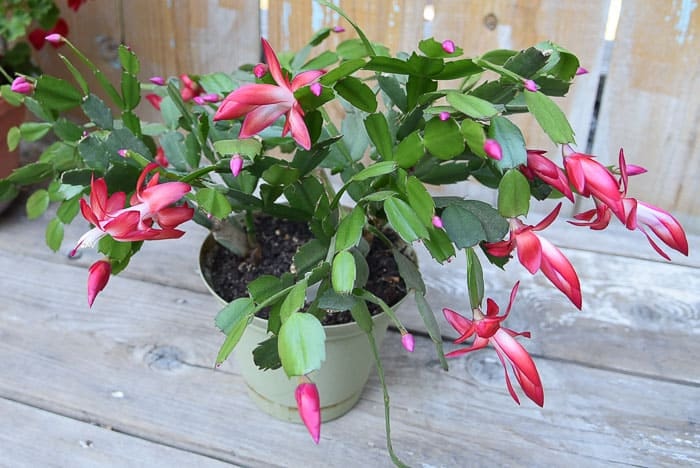HousePlantJoy is supported by our audience. When you purchase through one of our links, we may earn a small affiliate commission. As an Amazon Associate I earn from qualifying purchases. Your cost is not affected.
==================
In this article on Christmas Cactus Problems and Solutions, we’ll delve into the most common problems faced by Christmas cactus owners and provide practical, effective solutions to ensure your plant thrives throughout the holiday season and beyond. With their vibrant blooms and festive timing, Christmas cacti have become a beloved holiday tradition in many homes.
However, as enchanting as they are, these plants can sometimes pose challenges that perplex even the most experienced gardeners. From drooping leaves to a lack of blossoms, the issues plaguing Christmas cacti can be as varied as the plants. Whether you’re a seasoned green thumb or a novice plant enthusiast, you’ll find the guidance you need to keep your Christmas cactus healthy and vibrant.
Christmas Cactus Problems and Solutions: Quick Fixes for Common Issues
Christmas cacti are popular holiday plants known for their vibrant blooms. While they’re generally easy to care for, these plants can face some issues. Common Christmas cactus problems include dropping leaves, lack of blooms, and discolored foliage.
Many of these issues stem from improper care or environmental factors. For example, Christmas cactus leaves may drop due to overwatering, temperature stress, or poor lighting. Addressing these problems early can help your plant thrive and produce beautiful flowers.
Understanding your Christmas cactus’s needs can prevent many issues before they start. This article on Christmas Cactus Problems and Solutions will guide you through common problems and their solutions, helping you keep your plant healthy and blooming year after year.
Key Takeaways
- Christmas cacti are cherished holiday plants celebrated for their vibrant blooms. These tropical beauties exhibit unique growth patterns and come in various types, each adding its charm to the festive season.
- To ensure Christmas cacti thrive and bloom, specific care is crucial. Understanding and implementing the right light, temperature, humidity, watering, soil, and potting techniques are key to maintaining healthy and flourishing plants.
- Christmas cacti can experience various issues, but many can be resolved with proper care. From symptoms of overwatering to challenges in blooming, addressing these problems promptly will help keep your plant healthy and vibrant.
- Effective care for Christmas cacti involves regular pruning, seasonal adjustments, and attention to long-term health. These practices ensure your plant remains thriving and attractive throughout the year.
Understanding Christmas Cactus
Christmas cacti are popular holiday plants known for their colorful blooms. These tropical plants have unique growth habits and come in several varieties. Let’s explore the key aspects of Christmas cacti to help you care for them better.
Botanical Profile
Christmas cacti belong to the genus Schlumbergera. They are epiphytes, meaning they grow on other plants in their native habitat. Unlike desert cacti, they thrive in humid environments. These plants have flattened, leaf-like stems called phylloclades. The stems have segments that can grow up to 2 inches long. Christmas cacti produce tubular flowers at the tips of their stems. The flowers come in shades of pink, red, purple, and white.
Growth Habits
Christmas cacti have a unique growth pattern. They typically bloom once a year, usually around the holiday season. These plants are long-lived and can survive for decades with proper care. They grow slowly but reach up to 12 inches tall and 24 inches wide.
Christmas cacti prefer bright, indirect light. They need a period of darkness to trigger blooming. Proper watering is crucial for their health. In their natural habitat, Christmas cacti grow in tree crevices. This explains their preference for well-draining soil and their ability to tolerate some neglect.
Common Varieties
There are several popular varieties of Christmas cactus. The most common ones include:
- Schlumbergera truncata: Also known as Thanksgiving cactus, blooms earlier than other varieties.
- Schlumbergera bridgesii: This is the true Christmas cactus, blooming in December.
- Schlumbergera gaertneri: Often called Easter cactus, it flowers in spring.
Each variety has slightly different stem shapes and flower colors. Some newer hybrids offer a wider range of flower colors, including yellow and orange. You can identify different varieties by looking at the stem segments. Thanksgiving cacti have pointed teeth on their segments, while Christmas cacti have rounded edges.
Optimal Growing Conditions
Christmas cacti need specific care to thrive and bloom. Understanding Christmas Cactus Problems and Solutions is essential to ensure the right light, temperature, humidity, watering, soil, and potting practices are followed for healthy plants. By addressing these issues, you can enjoy vibrant and beautiful Christmas cacti year after year.
Light Requirements
Christmas cacti prefer bright, indirect light. Place them near a north or east-facing window. Too much direct sunlight can burn the leaves. In fall, they need 13 hours of darkness each night to set buds. During summer, move your cactus outside to a shady spot.
Bring it back indoors before the first frost. Rotate the pot regularly to ensure even growth. If leaves turn yellow, your plant may be getting too much light. Move it to a shadier spot. Red or purple leaves can mean they need more light.
Temperature and Humidity
During the growing season, Christmas cacti-like temperatures are between 70-80°F (21-27°C). In fall, lower the temperature to 55-65°F (13-18°C) to encourage blooming. These plants thrive in high humidity. Aim for 50-60% humidity, especially when flowering.
Use a humidifier or place a tray of water near the plant to increase moisture in the air. Avoid sudden temperature changes or drafts. Keep your cactus away from heating vents and cold windows.
Watering Techniques
Water your Christmas cactus when the top inch of soil feels dry. These plants prefer to be dry and dry enough. Overwatering or underwatering can cause leaves to wilt or fade. During the growing season, water more frequently. Reduce watering in fall to encourage bud formation.
Always use room-temperature water to avoid shocking the roots. Check the soil moisture regularly. If the plant feels light when you lift it, it likely needs water. Water thoroughly until it drains from the bottom of the pot.
Soil and Fertilization
Use a well-draining potting mix for your Christmas cactus. A mix of regular potting soil, perlite, and orchid bark works well. This allows for good drainage while retaining some moisture. Fertilize your cactus monthly during the growing season.
Use a balanced, water-soluble fertilizer at half-strength. Stop fertilizing in late summer to prepare for blooming. Don’t over-fertilize, as this can damage the roots. If you notice salt buildup on the soil surface, flush the pot with water to remove excess fertilizer.
Potting and Repotting
Christmas cacti prefer to be slightly pot-bound. Repot every 2-3 years or when the plant outgrows its container. Choose a pot that is only slightly larger than the current one. When repotting, gently remove the plant and shake off excess soil.
Trim any dead or diseased roots. Place in fresh potting mix and water thoroughly. After repotting, wait a week before fertilizing. This gives the plant time to adjust to its new home. Repot in spring after flowering for best results.
Overwatering Symptoms
Overwatering is a frequent problem for Christmas cacti. You might notice drooping or wilting leaves. The stems can become soft and mushy. Leaf segments may turn yellow or fall off easily. Root rot is a serious risk when the soil stays too wet.
To fix this, let the soil dry out between waterings. Check the drainage holes in your pot. Make sure water flows freely. Use a well-draining potting mix for cacti and succulents. Water is less often used in winter when plants are not actively growing.
Underwatering Symptoms
Underwatered Christmas cacti show different signs. The leaves may wilt up or look wrinkled. They might feel thin and limp when you touch them. The plant’s growth can slow down or stop. Flower buds might drop before opening.
To help an underwatered cactus, water it more often. Give it a good soak, letting water drain from the bottom. Then, wait until the top inch of soil feels dry before watering again. In hot weather, you may need to water more frequently.
Pest and Disease Management
Mealybugs are common pests on Christmas cacti. Look for white, cottony clusters on stems and leaves. You can remove them with a cotton swab dipped in rubbing alcohol. Gray mold or Botrytis blight can appear as a whitish-gray fuzzy growth. This often happens from overwatering.
Improve airflow around your plant and avoid getting water on the leaves. For both pests and diseases, isolate infected plants. Prune off heavily affected parts. Use neem oil or insecticidal soap for persistent problems. Always check new plants for signs of pests before bringing them home.
Blooming Challenges
Getting a Christmas cactus to bloom can be tricky. These plants need specific light and temperature conditions to flower. They need 12-14 hours of darkness daily for about six weeks. Keep the plant in a cool room (60-65°F) during this time. Avoid moving it once buds start to form. Too much light or warmth can cause buds to drop.
Pale or reddish leaves might mean your cactus is getting too much direct sun. Move it to a spot with bright, indirect light. Water and fertilize less while the plant is forming buds. With the right care, you’ll enjoy beautiful blooms.
Troubleshooting and Solutions
Christmas cacti can face several issues that affect their health and appearance. Understanding common Christmas Cactus Problems and Solutions can ensure your plant thrives. Proper care and quick action can help solve these problems and keep your plant healthy and vibrant.
Leaf Discoloration and Drop
Pale or red leaves on your Christmas cactus often indicate too much sunlight. Move the plant to a spot with indirect light to prevent further damage. If leaves are turning yellow, it may be due to overwatering. Let the soil dry out between waterings—only water when the top inch feels dry.
Brown, shriveled leaves usually mean the plant is thirsty. Water more frequently, but avoid soaking the soil. To prevent leaf drop, maintain consistent care. Avoid sudden changes in temperature, light, or watering habits.
Root Rot Resolutions
Root rot is a serious issue caused by overwatering. Signs include wilting, yellowing leaves, and a foul smell from the soil. To Fix Root Rot:
- Remove the plant from its pot
- Cut away any brown, mushy roots
- Replant in fresh, well-draining soil
- Water less frequently
Prevention is key. Use a pot with drainage holes and a soil mix for cacti and succulents.
Bud Drop Prevention
Bud drop can be frustrating when you’re looking forward to blooms. Common causes include:
- Temperature fluctuations
- Dry soil
- Low humidity
- Sudden changes in light
To Prevent Bud Drop:
Keep the plant away from drafts and heat sources:
- Maintain consistent watering.
- Increase humidity with a pebble tray or humidifier.
Treating Pest Infestations
Mealybugs are common pests for Christmas cacti. They appear as white, cottony clusters on stems and leaves. To treat mealybugs:
- Mix 1 part 70% isopropyl alcohol with four parts water
- Wipe the solution on affected areas
- Repeat every 5-7 days for a month
For severe infestations, consider using neem oil or insecticidal soap. Always test on a small area first to avoid leaf damage.
Fungal and Bacterial Disease Control
Gray mold, or Botrytis blight, can affect Christmas cacti. It appears as a whitish-gray mold on leaves. To control fungal diseases:
- Remove affected parts immediately
- Improve air circulation around the plant
- Avoid overhead watering
- Use a fungicide if needed
For bacterial diseases, remove infected parts and isolate the plant. Sterilize your tools between cuts to prevent spread. Prevent future outbreaks by maintaining proper watering habits and avoiding leaf wetness.
Pruning Practices
Pruning your Christmas cactus keeps it healthy and shapely. It would be best to prune after blooming, usually in late winter or early spring. Use clean, sharp scissors to cut off segments at the joints. Remove up to a third of the plant’s size. This encourages new growth and a fuller shape.
Don’t throw away the cuttings – you can root them to grow new plants. Pruning also helps remove any dead or diseased parts. This prevents issues from spreading to healthy areas. Regular pruning keeps your cactus compact and promotes more blooms next season.
Seasonal Care Adjustments
Your Christmas cactus needs different care as seasons change. In spring and summer, water when the top inch of soil feels dry. Feed every two weeks with a balanced fertilizer. During fall, reduce watering and stop fertilizing. This helps trigger blooming.
Move the plant to a spot with 12-14 hours of darkness each day for about six weeks. In winter, your cactus needs less water. Only water when the soil is quite dry. Keep it away from cold drafts and heat sources. Maintain humidity by misting or using a pebble tray.
Long-Term Plant Health
For lasting health, repot your Christmas cactus every 2-3 years. Use a pot that is one size larger and has good drainage. Choose a light, well-draining soil mix made for cacti. Check for pests regularly. Look for signs like webbing, spots, or sticky residue.
Treat problems early with neem oil or insecticidal soap. Protect your cactus from extreme temperatures. Keep it between 60-70°F (15-21°C) year-round. Avoid sudden changes in light or temperature. With proper care, your Christmas cactus can live for decades, bringing joy each holiday season.
Keeping Your Christmas Cactus Thriving: The Key to Year-Round Joy
Navigating Christmas cactus problems and solutions can be rewarding for plant enthusiasts and holiday decorators. With their stunning blooms and festive appeal, Christmas cacti are a cherished addition to many homes. By understanding common issues such as overwatering, pests, and improper light conditions, you can take proactive steps to address these challenges effectively. This guide has equipped you with practical solutions to ensure your cactus remains healthy and vibrant throughout the holiday season.
Embracing these insights will help you maintain a thriving Christmas cactus that continues to bring cheer to your home year after year. Whether fine-tuning your watering routine or optimizing light conditions, the right care will ensure your plant survives and flourishes. Enjoy the continued beauty and festive spirit of your Christmas cactus, knowing that it will bloom joyfully for many seasons with the proper attention.
How Can I Tell if My Christmas Cactus Is Not Flowering Due to Poor Conditions?
What Could Cause a Christmas Cactus to Develop Red Leaves?
How Do I Identify and Treat Diseases in My Christmas Cactus?
Why Should You Join Us?
Get insider secrets: Unearth the best-kept tips to keep your plants thriving and blooming like never before.
Expert Advice: Gain access to our team on Facebook, Twitter, and other social media channels, and meet our gardening experts eager to help you on your plant journey.
Engage With Like-Minded Souls: Connect with fellow plant lovers, exchange stories, and build a supportive community. Join us today! Follow Houseplant Joy on Facebook, Instagram, and Twitter for daily inspiration and a blooming good time! #HouseplantJoy #GreenThumbsUnite #HouseplantLove


